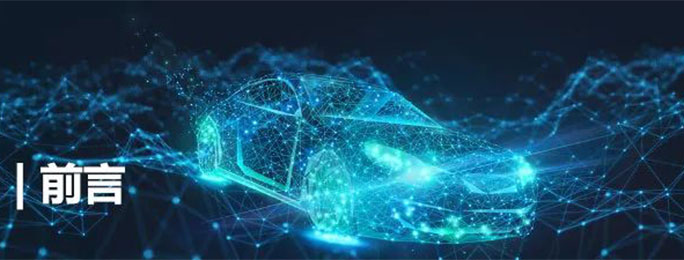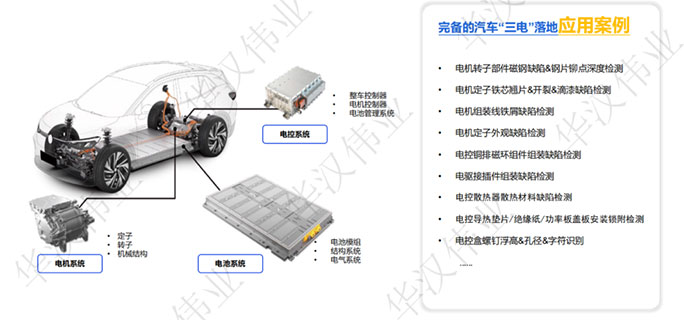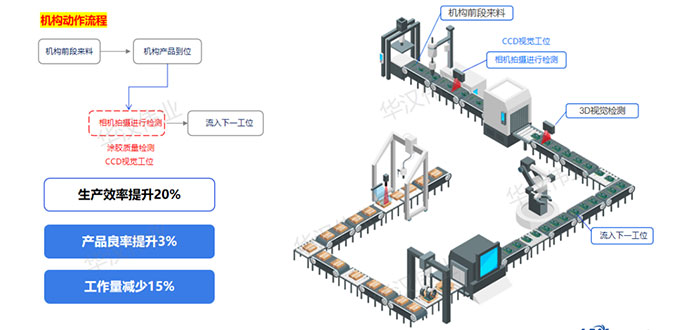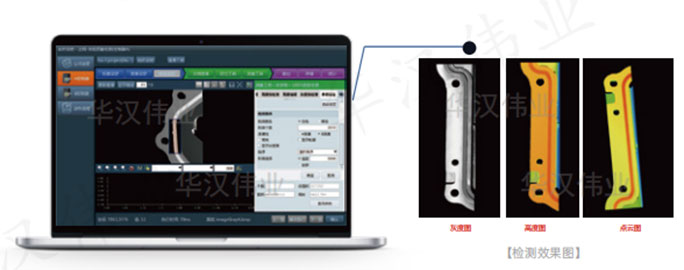

Since the Industrial Revolution, the power form and energy types of automobiles have also undergone many changes. Currently, global automobiles are completing the evolution process from traditional cars to new energy intelligent cars. The future penetration rate will greatly increase, and the long-term growth space is expected to exceed 10 trillion US dollars.
——Source: 36 Krypton Consultation
Automobile manufacturers around the world are accelerating the development and release of new energy vehicles (NEVs). Due to the significant differences in the construction of electric power systems compared to internal combustion engine vehicles, manufacturers and suppliers in the industry need to retrofit electric power systems to meet the production and assembly needs of key components of electric vehicles.
The power system of a car is mainly referred to as the "three electric" system, which mainly refers to the motor, battery, and electronic control. One of the main challenges in quality assurance is the increasing demand for precision - in other words, high precision requirements bring about changes in detection methods. We need to use various advanced quality assurance technologies to ensure the reliability, efficiency, and safety of new energy vehicles from manufacturers and suppliers, so that customers can adapt to this change.
Recently, HANSWELL has provided a comprehensive automotive three TV sensing detection solution for a leading automotive manufacturing enterprise. Based on the analysis of multiple scenarios in the automotive three electric industry and years of industry accumulation in the field of machine vision, it has helped the production line quickly land, with a detection accuracy rate of up to 98%, reaching the leading level in the industry.

The automotive electrical system is the core component of a car, consisting of multiple components, with a wide variety of types and diverse performance applications. Moreover, the degree of standardization, serialization, and generalization is also extremely high. In the production and assembly process of various components, various defects are prone to occur, including pressure marks, scratches, paint peeling, chip peeling, material leakage, and so on. These defects may have a serious impact on the yield rate of the entire production line.
Even more challenging is that some components have small dimensions, smooth surfaces, and patterns and grooves inside, which not only easily produce high reflectivity but also impurities, greatly increasing the difficulty of defect detection.
Moreover, the manufacturing technology of automotive electronics is the core technology of automotive companies. In order to prevent the leakage of important information, automotive companies generally provide relatively few samples, which leads to an extreme shortage of testing samples and data in the electronics industry, posing great challenges to visual inspection.
Faced with industry pain points such as extreme data shortage, extremely high industrial acceptance requirements, diverse forms of inspected products, and difficulty in distinguishing defects in the automotive three electric industry, if traditional algorithmic technology solutions are simply used in the inspection process, it is obvious that they can no longer meet the inspection requirements.
Therefore, in cooperation with its manufacturers, Huahan Weiye has integrated the architecture and system innovation of the new generation of visual artificial intelligence technology into traditional detection algorithms, and empowered the application upgrade of multi scene detection in the automotive electrical process with 2D/3D+AI innovative detection technology.

During the detection process, traditional 2D/2.5D/3D visual inspection can quickly infer defect data online. However, with the empowerment of AI deep learning, the algorithm advantage of small sample learning can be used to intelligently synthesize defects, which can solve problems such as small data samples and high difficulty in defect detection in industrial production.
At the same time, a powerful database can also be established in the detection system, which enables the company to flexibly customize solutions for defects in the database in the subsequent production line layout. While improving detection accuracy and efficiency, it can also achieve 100% automated intelligent full inspection of products and intelligent analysis of detection data.
In the era of large-scale manufacturing, in order to seize market opportunities, manufacturing enterprises have extremely strict requirements for the landing time of production lines, equipment entry time, and the design cycle of inspection schemes. This requires visual inspection schemes to have fast scene adaptation ability, multi scene application development ability, and fast landing ability of production lines.
HANSWELL does not simply integrate AI detection technology into its testing plan for the three electrical systems. During the design process, the company collaborates with equipment manufacturers to form a closed-loop delivery model, from AI algorithm development, software development to optical design, and can provide customers with a one-stop solution.

Through the empowerment of AI, the full chain flexible customization of data from collection, analysis to algorithm precipitation has been achieved, with strong industry universality and replicability. It can achieve high compatibility with multiple detection scenarios and has fast scene adaptation ability.
Based on the same underlying logic, the company can provide universal products and solutions for the same type of enterprise, and replicate them on every product line, greatly meeting the needs of various automotive three electric manufacturers for rapid deployment and landing in multiple scenarios and production lines, greatly saving time in solution design, production line deployment cycle, and early control of labor costs.
HANSWELL has built a comprehensive ecosystem of intelligent manufacturing software and hardware products based on the four in one solution capabilities of high-precision algorithms, high-performance computing, scenario based applications, and a full stack technology service system.
To meet the visual inspection needs of the three electric production lines, HANSWELL has provided a relatively complete set of automotive three electric landing cases, which are deployed in batches on actual production lines.
For example, magnetic steel defects in the stator and rotor components of new energy vehicle motors; Steel sheet riveting point depth detection, motor stator iron core warping piece& Cracking; Dropping paint defect detection, optical detection of size features of electric drive housing, assembly positioning and detection of electric control box, etc., through flexible algorithm combination scheme characteristics, a 2D+AI/3D+AI detection scheme was adopted in actual projects. The defect range was first located, and then the classification OK/NG was detected to the greatest extent possible, improving recognition efficiency. The detection accuracy was over 99%, the missed detection rate was 0%, and the kill rate was ≤ 0.01%. This maximized the intelligent detection of the production line, comprehensively improving the application of machine vision in the new energy vehicle production line, and efficiently empowering the automation and intelligent production of new energy.

Starting from the production pain points and difficulties of customers, innovative application of single point underlying detection algorithms, implementation of intelligent full inspection and intelligent analysis of detection data on each production line, and rapid deployment of multiple scenarios in the entire industry, gradually advancing and realizing from "point line surface", helping industrial manufacturing upgrade from "point intelligence" to "overall intelligence".
In the future, HANSWELL will continue to refine machine vision product solutions, work together with industry partners to create and build a new ecological system for industrial development that continuously optimizes automation, and promote innovative development of intelligent manufacturing+industry.